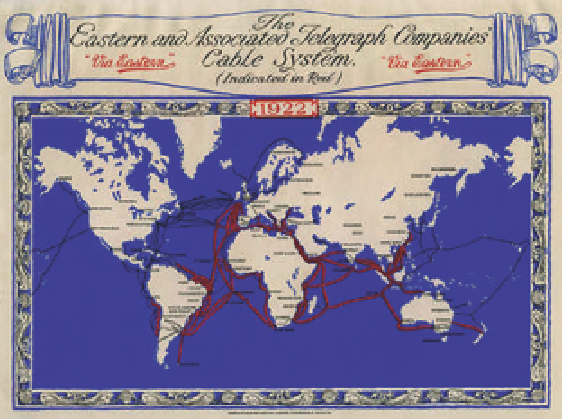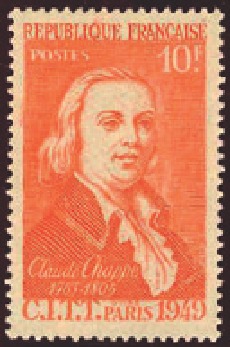Information Technology Reference
In-Depth Information
Fig. 10.2. A map of the global communi-
cations network of the British Empire in
1872. Telegraph cables reached as far as
Hong Kong and Australia.
The Victorian Internet
The preface to Standage's topic includes a summary of the impact of the
new technology:
During Queen Victoria's reign, a new communications technology was
developed that allowed people to communicate almost instantly across great
distances, in effect shrinking the world faster and further than ever before. A
worldwide communications network whose cables spanned continents and
oceans, it revolutionized business practice, gave rise to new forms of crime,
and inundated its users with a deluge of information. Romance blossomed over
the wires. Secret codes were devised by some users and cracked by others. The
benefits of the network were relentlessly hyped by advocates and dismissed
by its skeptics. Governments and regulators tried and failed to control the
new medium. Attitudes towards everything from news to diplomacy had
to be completely re-thought. Meanwhile, out on the wires, a technological
subculture with its own customs and vocabulary was establishing itself.
4
Although this sounds like a description of the present-day Internet, it is in
fact referring to the global telegraph network, which transformed business
and personal life in the nineteenth century, over a hundred years earlier than
the Internet (
Fig. 10.2
). Just as the Internet of today is sometimes known as
the “Information Superhighway,” the nineteenth-century telegraph network
was called the “Highway of Thought.”
Message routing systems, in which a message is passed from one “station”
to the next, have operated since antiquity. The mechanism for passing the mes-
sages has changed, however. At first, human runners carried the messages. In
1791, the French engineer Claude Chappe (
B.10.3
) invented a sophisticated
optical signaling system that consisted of a network of towers. An operator in
each tower moved two large, jointed arms on a signaling device called a
sema-
phore
to spell out messages. Each tower also had two telescopes, one pointing
backward and the other forward. Because Chappe's semaphore network was
an optical system, it required good line-of-sight visibility between the towers.
A major drawback of the system was that it only worked well in good weather,
B.10.3. French postage stamp with
Claude Chappe (1763-1805), inven-
tor of the optical telegraph.


Search WWH ::

Custom Search